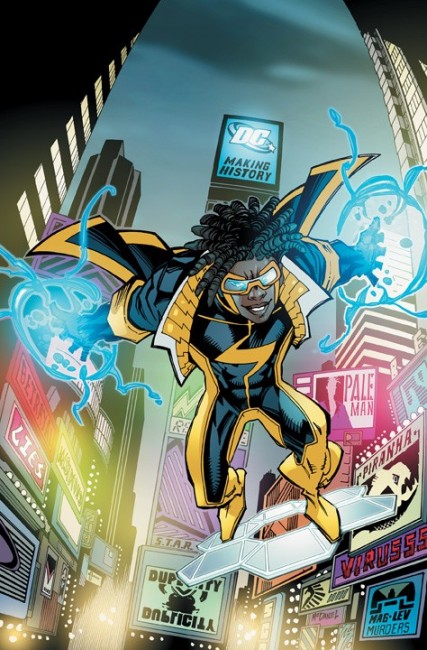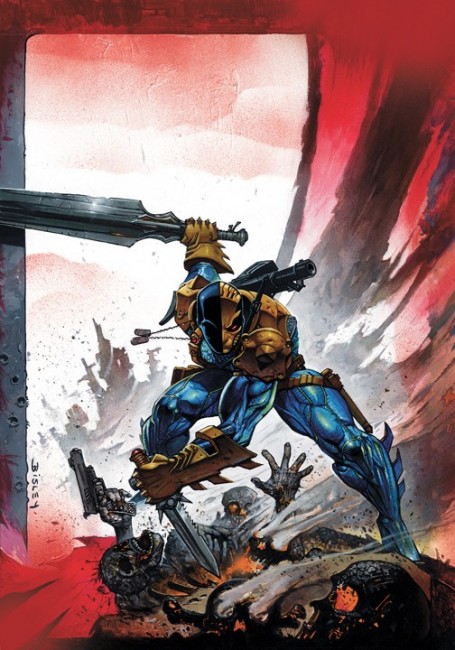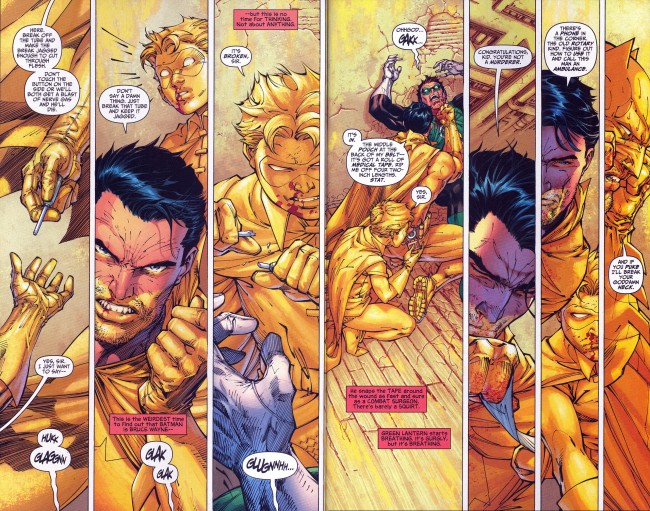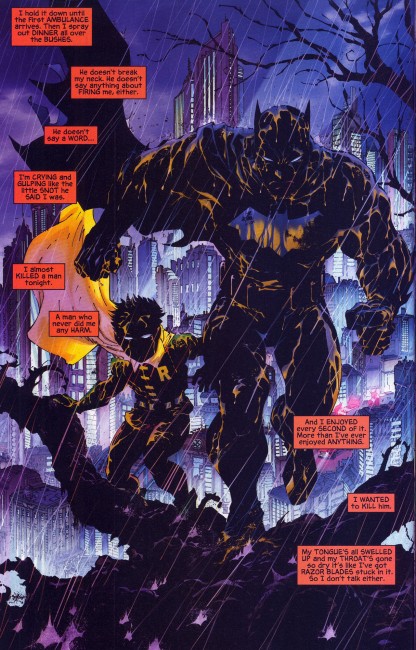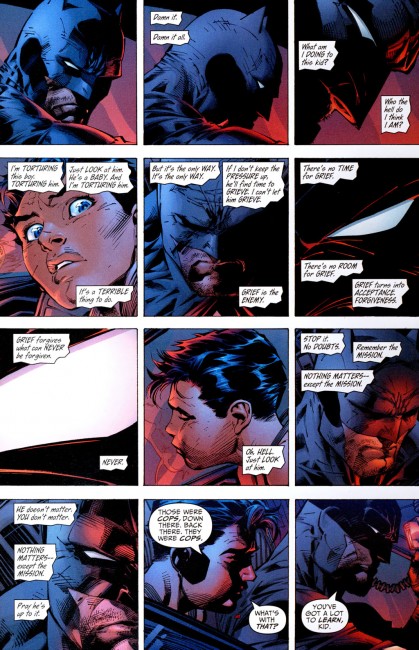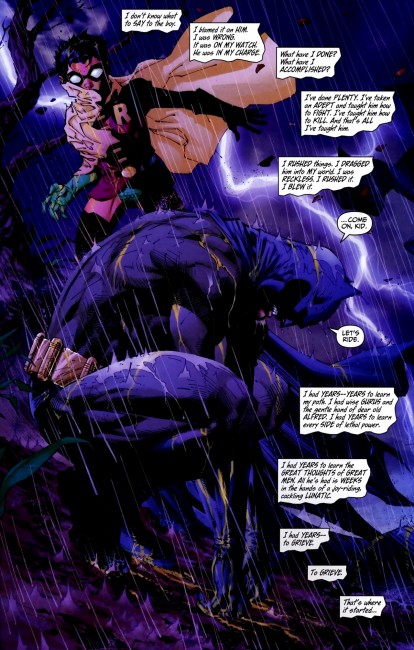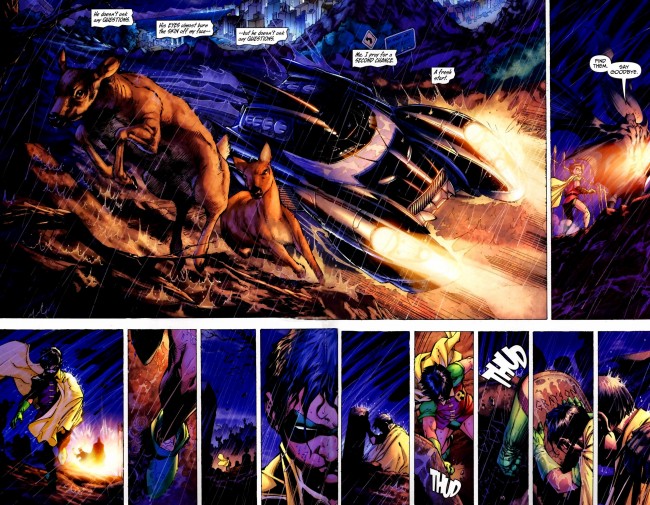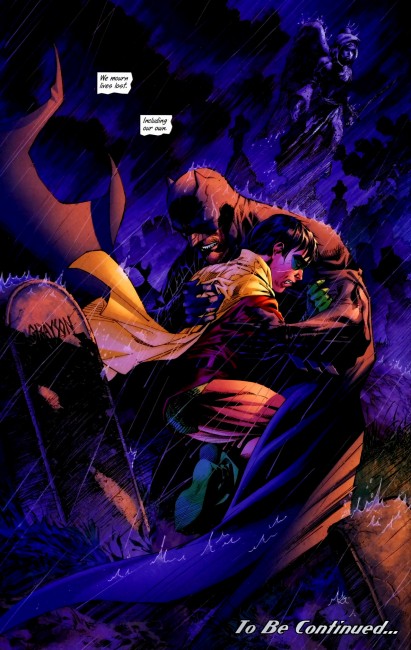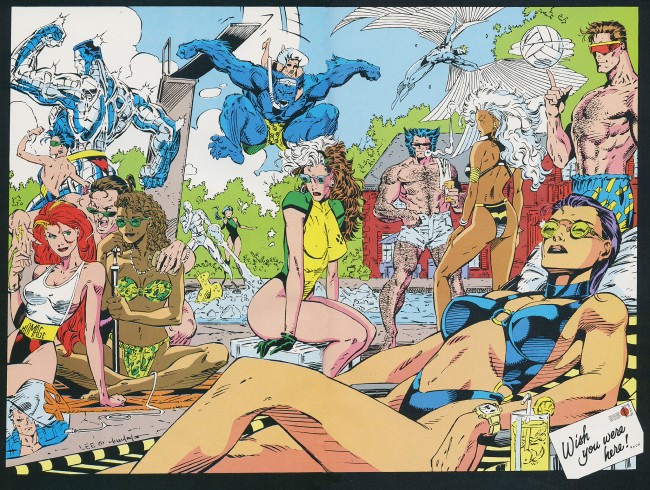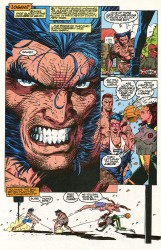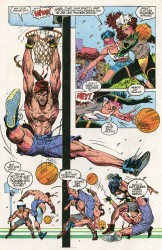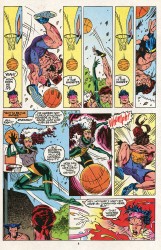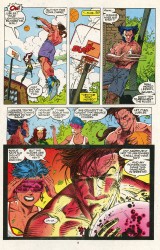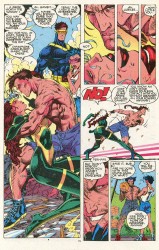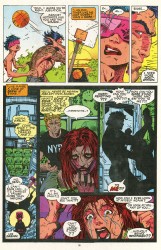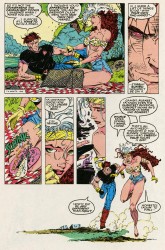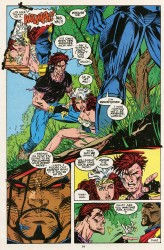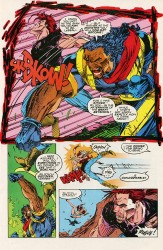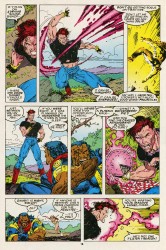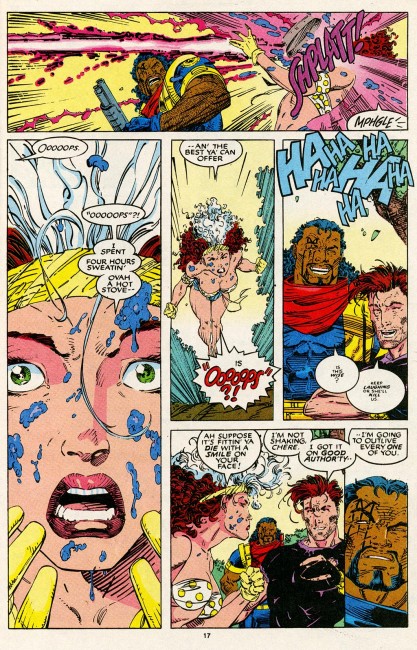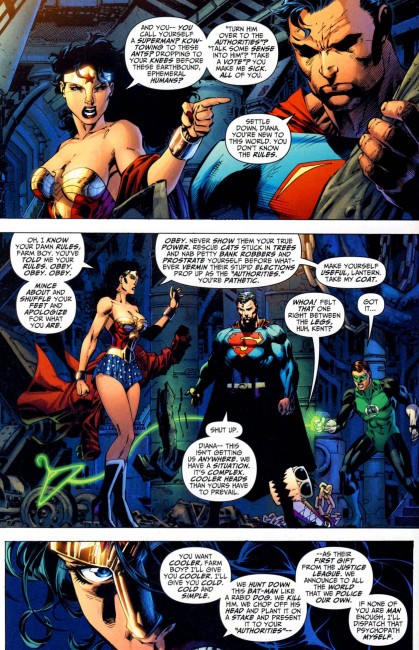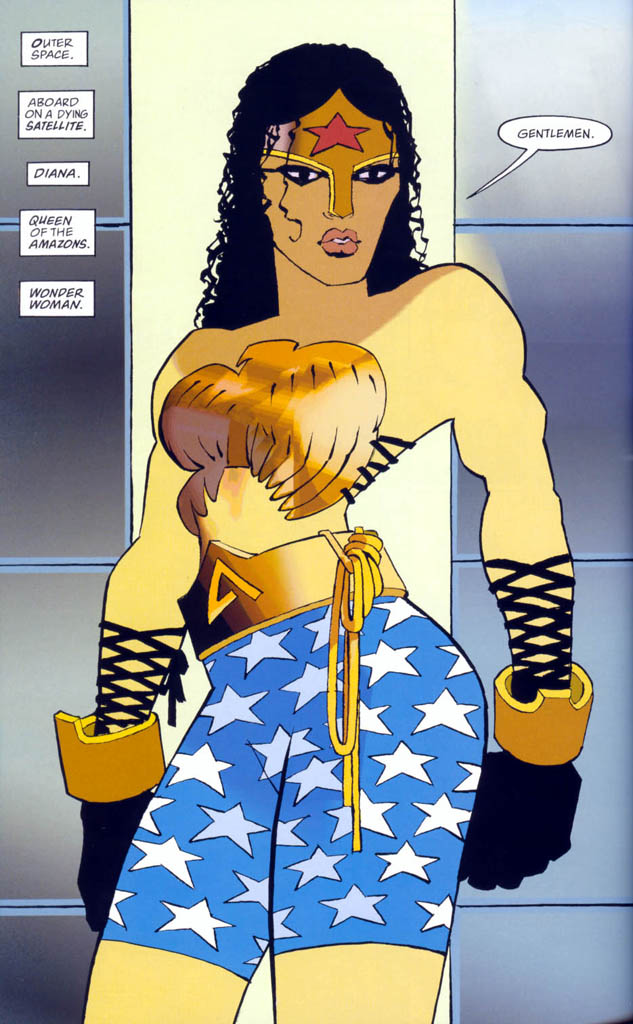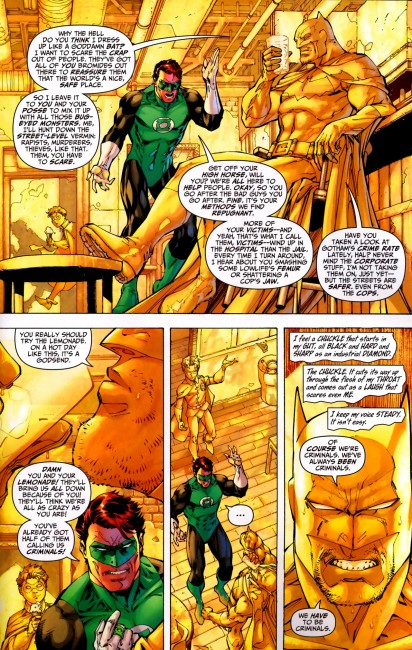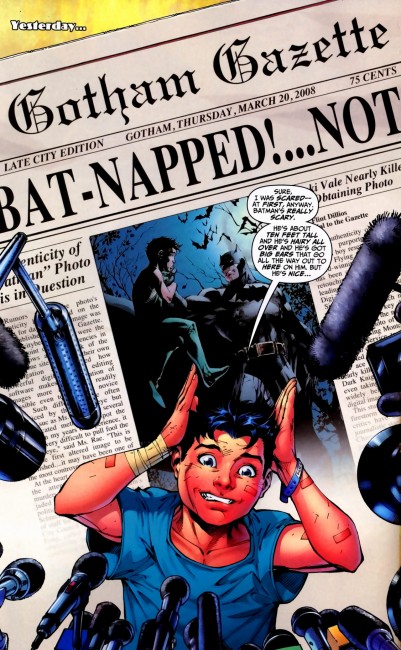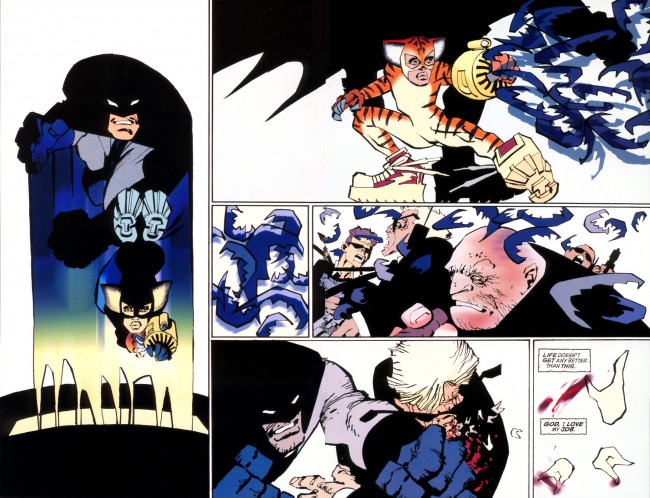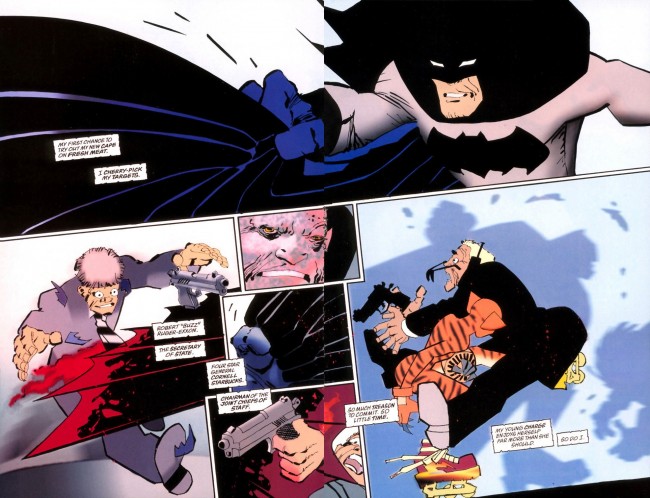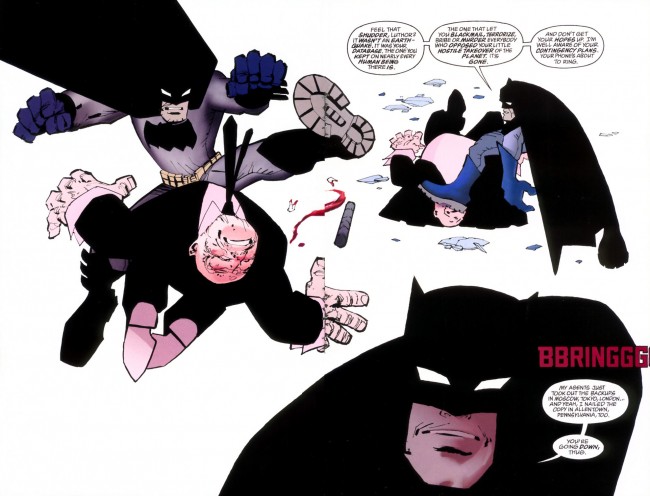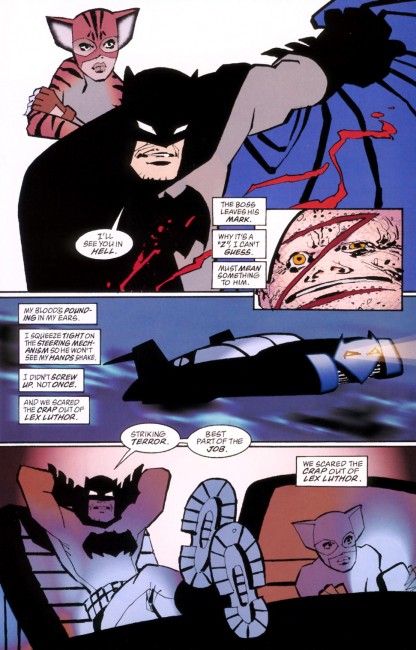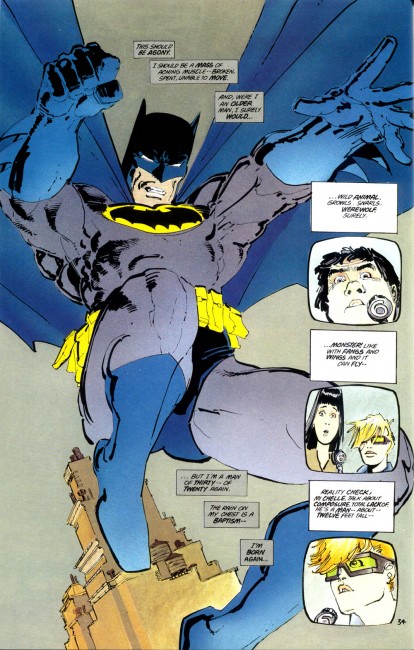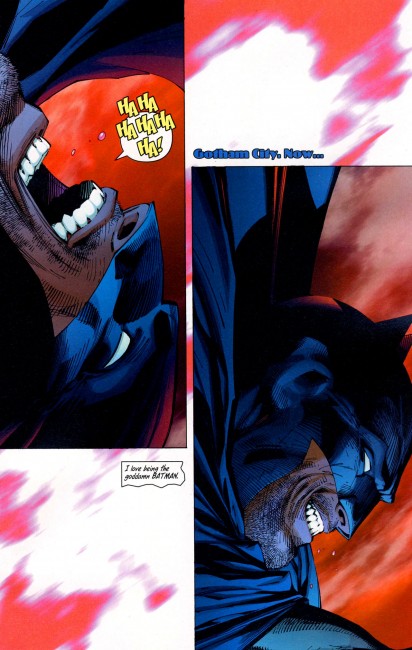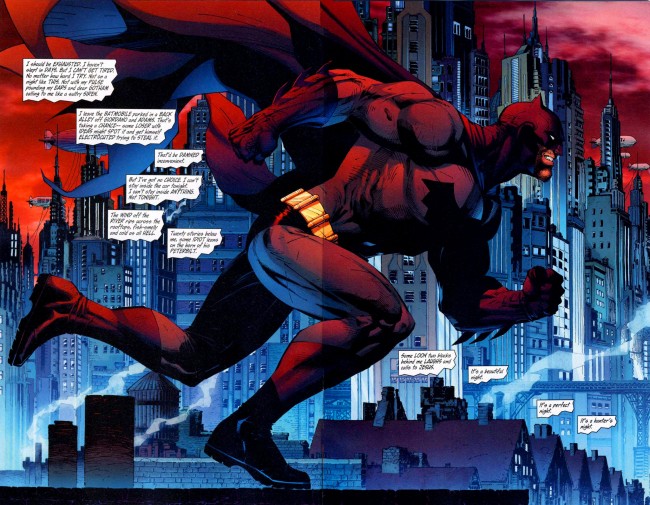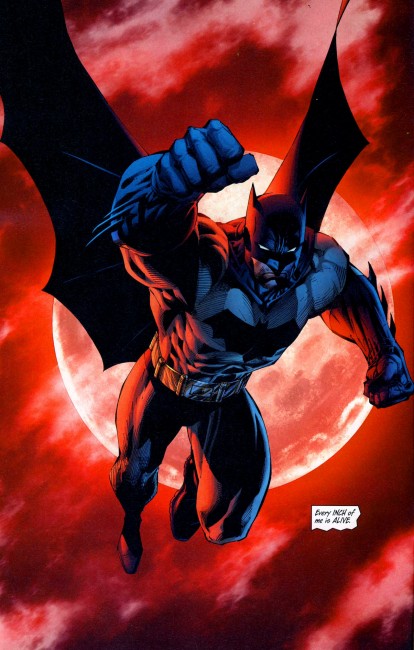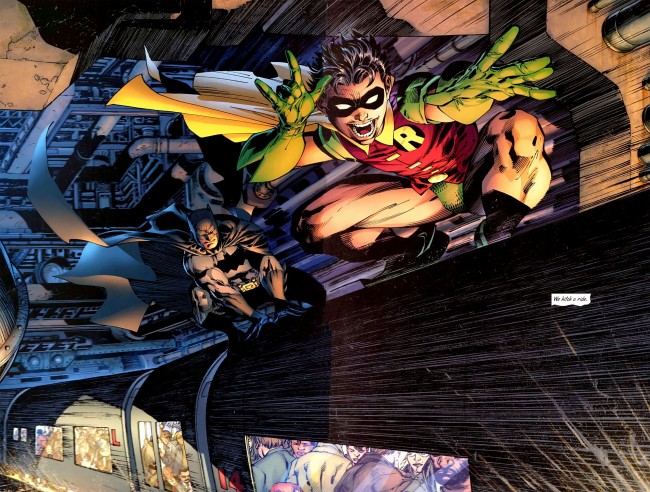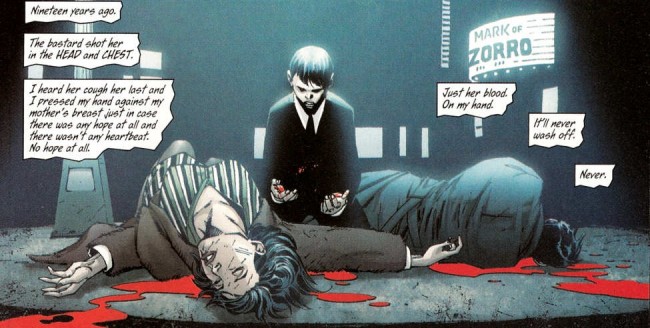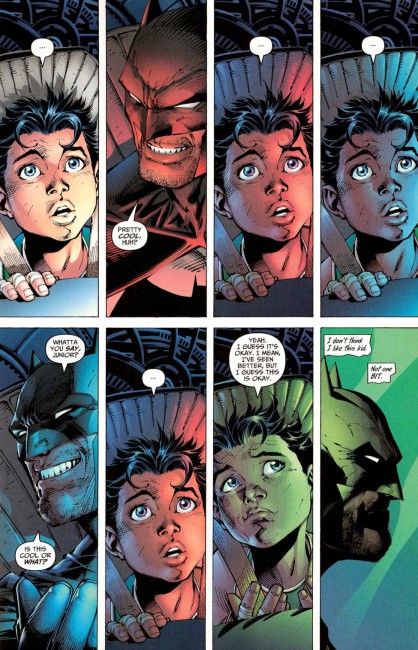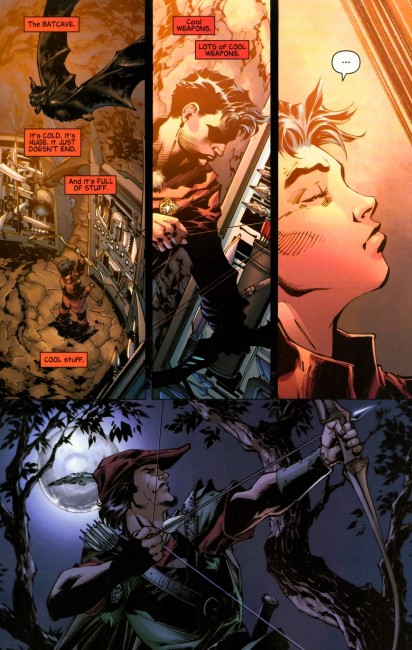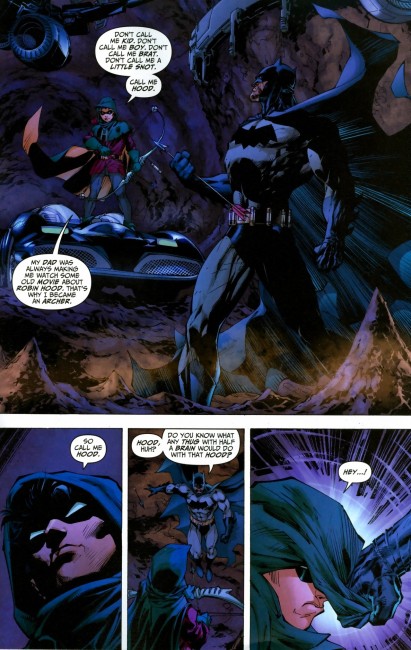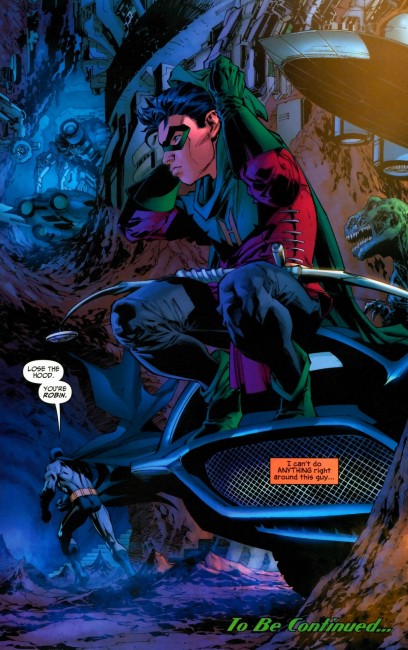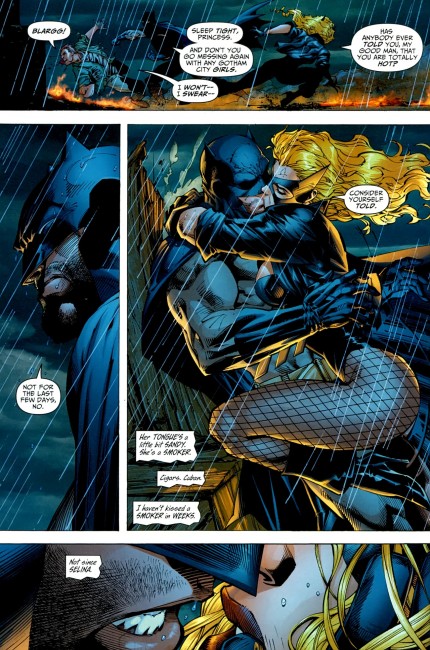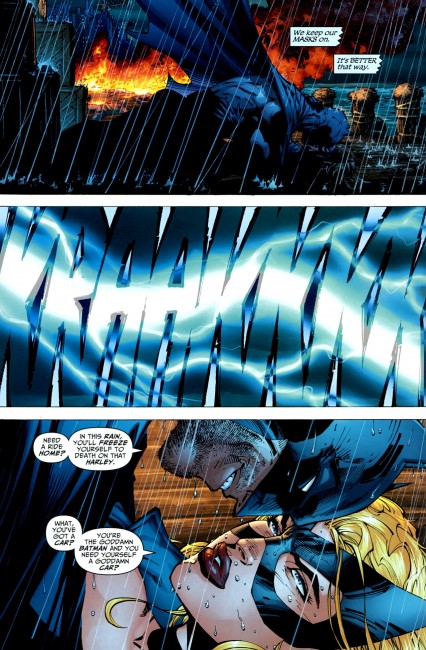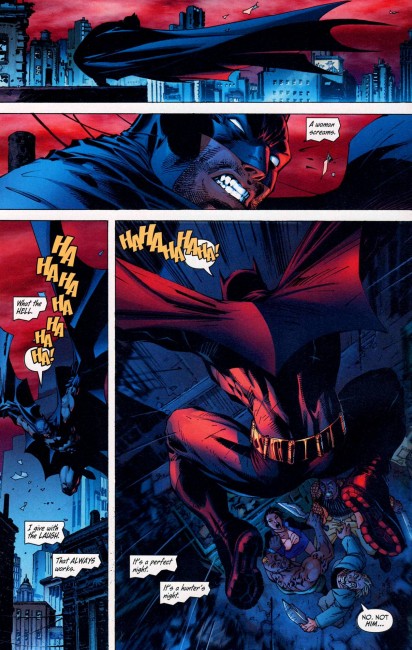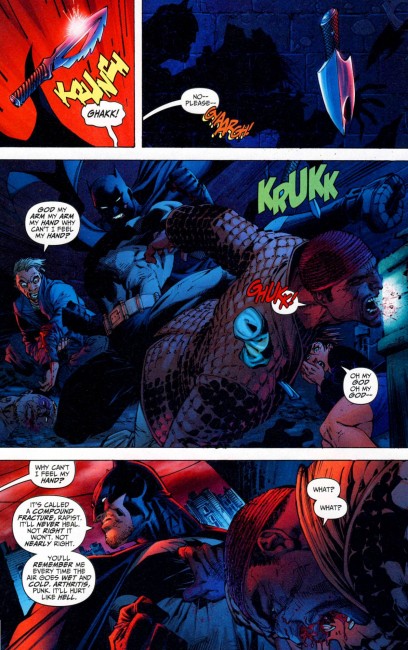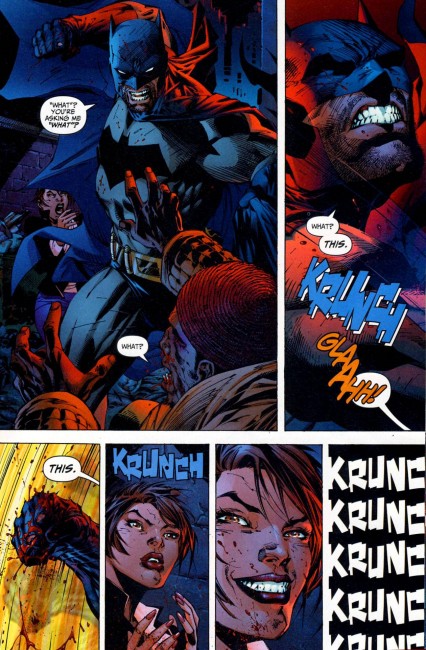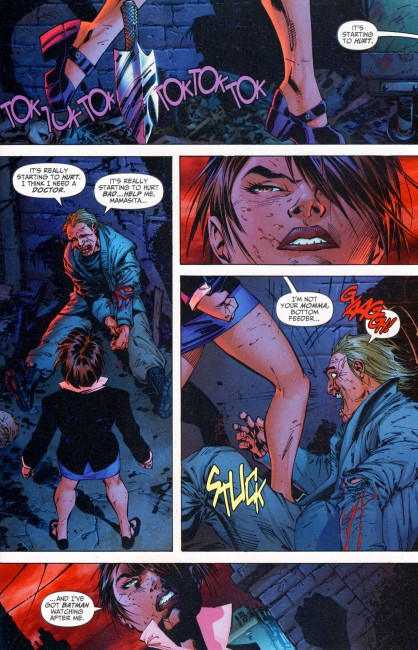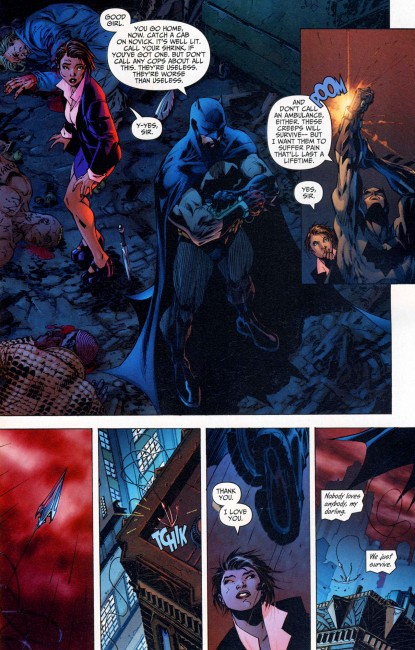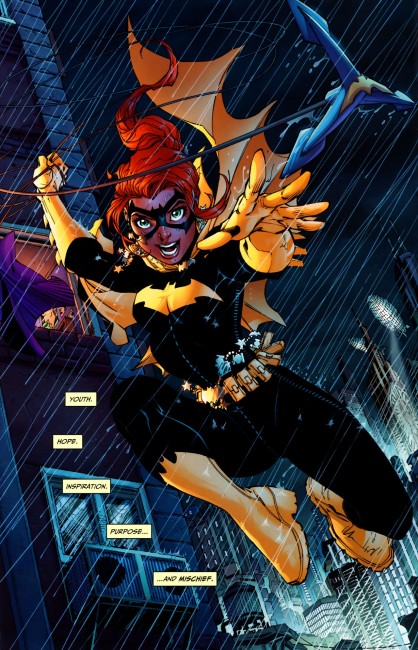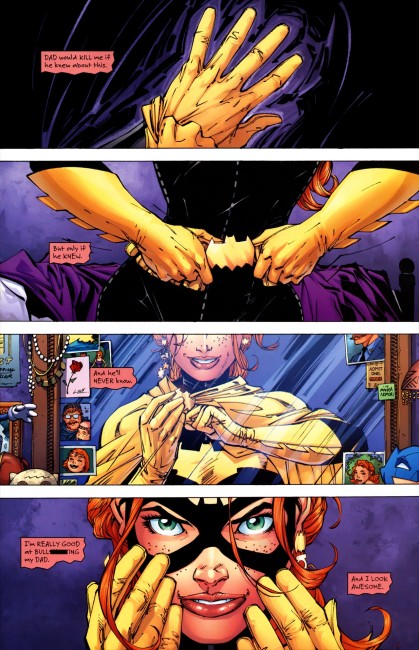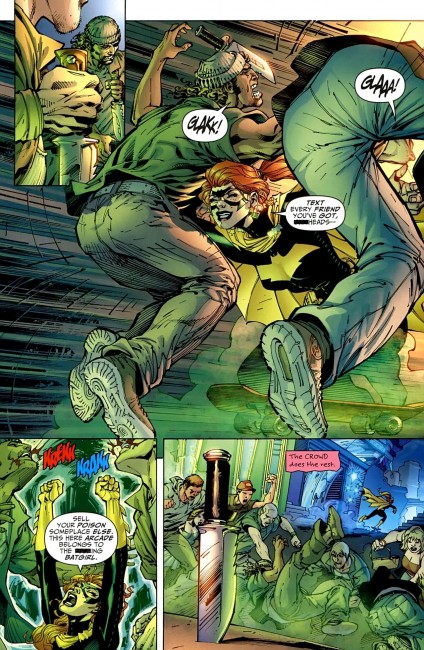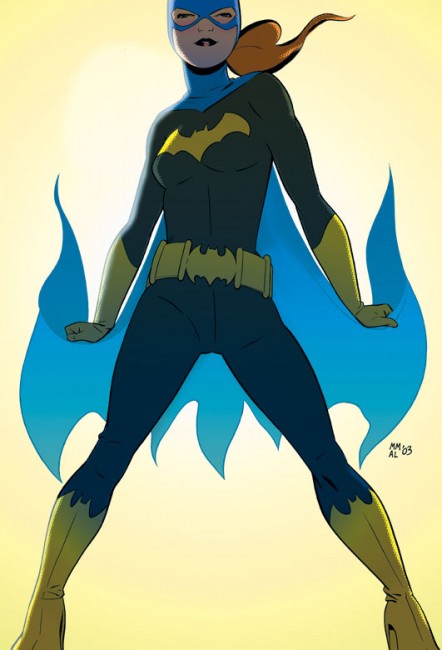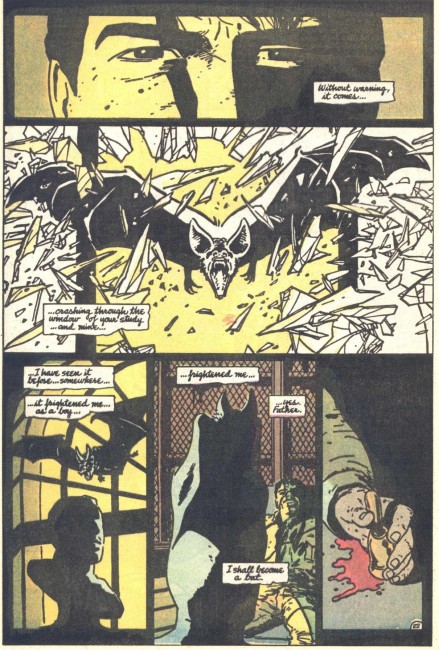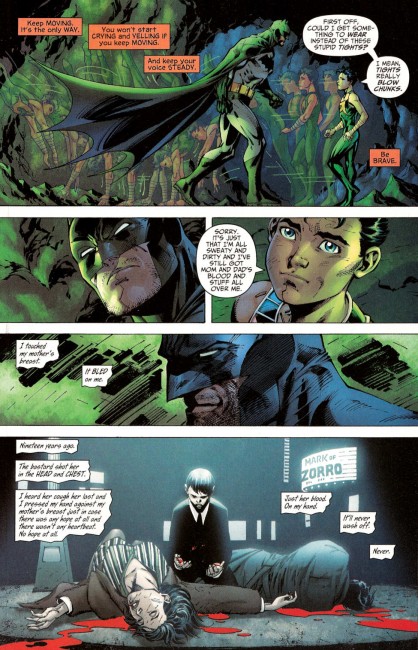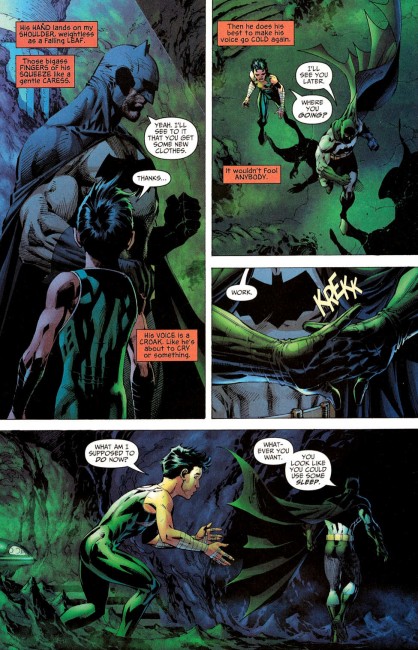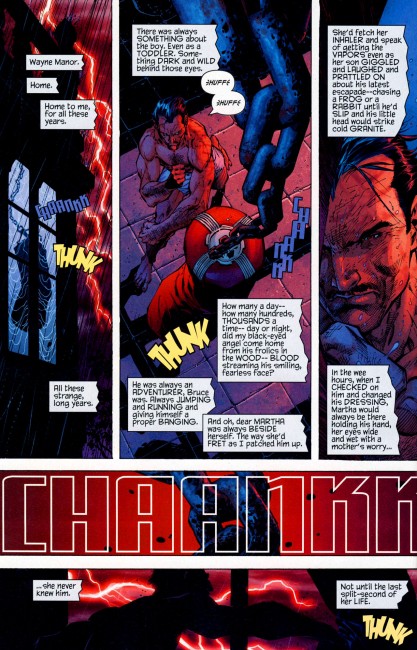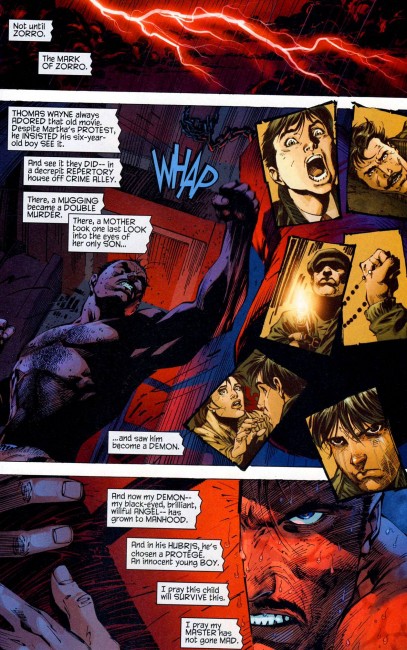
Work Formerly In Progress: Rebutting Sims & Uzumeri on Justice League
March 20th, 2012 Posted by david brothersOriginally, I wanted to write a rebuttal to a couple of reviews of Geoff Johns & Jim Lee’s Justice League that David Uzumeri and Chris Sims wrote. I disagree Justice League is in any way emblematic of everything wrong with comics, or even most things wrong with comics. Somehow, I also disagree with Uzumeri’s point that it shines with strong characters. I think there are good character moments in it (each character gets a chance to shine, which I greatly enjoyed), but the characterization is light. I made a joke about going at Sims and Uzumeri on Twitter, Laura Hudson called my bluff, and I started work on the post in earnest for ComicsAlliance.
To make a long story short, I burned out on modern cape comics in a major way partway through this essay. More specifically, I burned out before I got a chance to talk about Justice League at all. I’d had this grand (not really) structure planned–I’d point out why Jim Lee and Geoff Johns were the only people at DC who could do the Justice League relaunch justice, then I’d talk about how the series is structured like a posse cut (this didn’t appear out of thin air, it was going to be integral before I realized I wanted to write about posse cuts more than comical books), and then break down exactly why it didn’t need to be a heartbreaking work of incredible characterization to succeed as a Justice League comic. (“Don’t let me do it to ya, dunny, ’cause I’ll overdo it” is basically how I approach writing, I guess.)
But to make a short story longer, I lost the thirst for it partway through. I liked Justice League 1-6. If I had to give it a letter grade, I’d say “I spent four bucks on each issue and didn’t feel bad about it” and then condescendingly explain to you why I hate grades. (They try to quantify the unquantifiable.)
So to make a long story even longer than it should have been, below the bar is my nearly unedited draft. It’s a little over a thousand words about Geoff Johns and Jim Lee, and who they are and how they came to be. It’s a little cleaner than how I usually work — I usually throw in a lot of placeholder sentences and stuff to get back to later, as well as admonishments and “What is the point of this paragraph, stupid?” — but all that stuff at the top is notes for stuff I’d intended to get to or wanted to structure the essay around. Hopefully you like reading it.
(Keeping with my uncontrollable habit of biting rap songs for titles, “Allow me to reintroduce myself” has its direct origins in Jay-Z’s “Public Service Announcement” and “Back For The First Time” is a ref to Ludacris’s first [major label] album.)
allow me to reintroduce myself: justice league 1-6
back for the first time
geoff johns is the superhero guy. bendis is his only competition.
jim lee is the superhero guy. hitch took a stab, but lee is that guy who has shifted cape comics twice–with x-men #1 and batman: hush
it’s about big moments, it’s a blockbuster
it’s The Expendables, it’s Fast Five
The Posse Cut
Point: This isn’t an introduction. It’s a reintroduction.
Point: This is a blockbuster.
Point: Every character gets a moment to shine.
Point: This sets the foundation for relationships in broad strokes, leaving plenty of room for growth.
Point: It ain’t perfect. (lee’s art, johns’s dialogue)
Point: This Is Fast Five
Jim Lee and Geoff Johns are an interesting choice to relaunch Justice League for a wide variety of reasons. The number reason is probably that Lee and Johns are among DC’s biggest moneymakers, and combining the two is pretty similar to printing money. It makes sense financially, but I think it also makes sense from a creative point of view, too.
Jim Lee, love him or hate him, has had a tremendous effect on modern comics. He’s had indirect effects, like publishing Alan Moore’s America’s Best Comics or selling Wildstorm to DC and enabling the creative renaissance of that line, but in terms of direct effects… he’s hard to beat. His X-Men #1, written by Chris Claremont, sold over 8.1 million copies. It was the height of the X-Men boom, I think, and the X-Office spent some time chasing that dragon. Later, he co-founded Image and co-created the late, lamented Wildstorm Universe. Ten years after that, he teamed up with Jeph Loeb to create Batman: Hush, a twelve-issue story that was a shot in the arm for the character and returned Lee to the top of the sales charts.
Lee’s spent a lot of time doing work in other media over the past few years, but he’s an undeniable superstar, and possibly the artist in cape comics. His style helped redefine the X-Men, and through the X-Men, superheroes in general. Lee and Rob Liefeld get dinged a lot for pouches, but the people who trot out that tired old joke don’t realize that their styles were a shift forward. It was a move toward real-world utility, a way to increase the realism of comics without sacrificing the technicolor fever dreams that make cape comics so much fun.
Lee’s style incorporates the advances that John Byrne, Frank Miller, Art Adams, and Neal Adams brought to cape comics and pushes them a little further. The X-Men wore gear that was more like uniforms than costumes. Physiques became more chiseled under his pen. He sought out that sublime space between realism and fantasy and sold eight million comics off the back of his style. That’s impressive, and I think it’s turned Lee into one of those quintessential superhero artists. Kirby defined capes for our fathers and grandfathers. Jim Lee redefined them for us.
Geoff Johns has had a different (and shorter) route to the top, but he’s still a very significant player in the cape comics field. He’s the guy who spins straw into gold. With a diverse array of artists, Johns has revitalized, or been largely responsible for the revitalization of, Green Lantern, Hal Jordan, the Justice Society of America, Barry Allen, Aquaman, the Teen Titans, and several other characters besides.
Johns is the king of cape comics right now. His only real competitors in impact and quality are Grant Morrison, whose work has been limited largely to Batman for the past few years and the ongoing reboot of Action Comics for the past few years, and Brian Michael Bendis, who is currently in the process of wrapping up his almost eight-year stewardship of Marvel’s Avengers titles. Morrison is telling a sprawling, messy story about Batman that has lasted almost six years, and Bendis has never been able to match Johns for sheer bombast and scope.
Johns has found a formula for cape comics that works, and probably owes more than a little to Stan Lee’s approach in the ’60s. Rather than being a victim of Silver Age blinders that a lot of people think he is, Johns is actually firmly enmeshed in the Bronze Age. The level of violence in his comics tends toward the gory, which is definitely a hallmark of the modern era of DC Comics, but he has consistently managed to find an angle to approach a character from that resonates with readers. There’s no greater proof of that than the fact that Aquaman, his reboot of the Paul Norris character with artist Ivan Reis, is a top ten seller in the Direct Market.
“Aquaman sucks” is a long-running joke, and Johns turned it into the engine that makes that series go. These type of nerd in-jokes are generally grating — see also any “Glasses are a stupid disguise!” joke in comics — but for some reason, the series works. And I’m not even close to the target audience for that series, but I bought it, month-in, month-out. It’s not a particularly deep work, but it works on a basic superheroic level. You get Aquaman, he behaves like a hero should, but it doesn’t come off hokey or fawningly Silver Age. It’s a modern Aquaman, and I don’t mean modern in the sense of gritty. I mean modern as in suited for today’s day and age, post-Die Hard, post-Matrix, and post-The Fast and the Furious. It’s appropriate for 2012.
Modernizing characters is a tough row to hoe, but Johns has pulled it off time and time again. I got heavy into his first run on Flash when I was getting back into comics, and the Johns/Kolins run remains one of my favorite runs in comics. Sinestro Corps War was a great tale, and I’ve never been a Green Lantern fan, really. There’s something about his approach, the way he marries personal stakes (a thing that reminds me of Marvel-style heroes, actually) with superheroic stakes (Sinestro is gonna do _______) and gleeful violence (almost always on the part of his villains, his heroes remain almost squeaky clean, even after being given permission to use deadly force) that really strikes a chord.
long story short DC chose the best two people to work on the relaunch and the result was a book I enjoyed a lot, despite being sometimes clunky (“you’re the world’s greatest superheroes!”) and the army of inkers they brought in toward the end

